Whatfix is a powerful Digital Adoption Platform (DAP) for onboarding and internal training, but many users find that its capabilities stop there. If you’ve hit the ceiling with Whatfix’s features or pricing, you’re not alone.
Whether you're want more flexibility, a broader feature set, or affordability, many Whatfix alternatives tick those boxes and more.
So in this guide, we’ve rolled up our sleeves, tested the competitors, and scoured user reviews to bring you the top 5 Whatfix alternatives that actually go above and beyond Whatfix's capabilities.
Let's dive in to learn more about these Whatfix alternatives.
What are the best alternatives to Whatfix in 2025?
To go beyond initial customer engagement and build a consistent user experience, the following six Whatfix alternatives are worth checking out.
1. Supademo
Supademo is a leading product walkthrough software known for its ease of use and multi-use case support. You can build demos for asynchronous customer onboarding, training the internal team, and generating new leads.
Companies like Beehiiv, Senja, Porter Metrics, and Simple Testimonial have used Supademo to boost website engagement, sales pipeline, and customer retention.
How does Supademo compare to Whatfix?

Supademo has a major competitive advantage over Whatfix. Here's why 👇🏼
- Unlike Whatfix, Supademo is easy to use (rated 9.3 on G2): You can start recording your first demo and publish it in less than 5 minutes, compared to weeks of configuring Whatfix dashboards.
- Supademo caters to multiple use cases: Unlike Whatfix, which is focused on customer onboarding and training, you can use Supademo across departments. Whether you want to generate leads through website engagement, retain customers through in-app tours, or offer self-serve support, Supademo does it all.
- Supademo offers flexibility in interactive tours recording: You can screen record through Supademo's Chrome Extension, capture screenshots via Supa Screenshot, use the Figma plugin, record pixel-perfect HTML demos, or upload media files to create demos that match your exact needs.
- Supademo is more affordable than Whatfix: Unlike Whatfix's non-transparent and complicated pricing, Supademo offers straightforward plans based on per-user fees starting at $36/creator/month.
- Supademo offers AI capabilities, but Whatfix doesn’t: AI is integral to Supademo, and that’s why you get three key AI features.
Here’s a quick rundown of Supademo vs. Whatfix 👇🏼
| Feature | Supademo | Whatfix |
Best for | Customer success, sales, onboarding, and marketing teams | Customer success and product team |
Pricing | Starts at $27/mo (billed annually) | Custom pricing plans |
G2 Recognition | ✅ 2024 Spring Leader for ease of setup and time-to-launch | ✅ Fall Leader 2024 |
Ease of use | 9.3 on G2 | 8.7 on G2 |
Recording Type | ✅ HTML, Screenshot, Video, Figma Plugin, Video/Image Uploads | ✅ In-app, using no-code editor |
Desktop recording | ✅ Available | ✅ Available |
Team collaboration | ✅ Free and paid team members | ✅ Available |
AI voiceovers | ✅ Yes (15+ languages) | ⛔️ No |
Record your own voiceovers | ✅ Yes | ⛔️ No |
AI text generation | ✅ Yes (15+ languages) | ⛔️ No |
Detailed analytics | ✅ Yes | ✅ Yes, but limited |
Custom URL | ✅ Yes | ✅ No |
Time to launch | ✅<5 minutes | ✅ A few weeks due to custom setup |
Support | ✅ Yes (including free plans) | ✅ Yes, available on all plans |
Figma Plugin | ✅ Yes | ⛔️ No |
Free trial | ✅ Yes | ⛔️ No |
Free plan | ✅ Yes | ⛔️ No |
Features that only Supademo offers that Whatfix doesn’t

Supademo pricing
Supademo offers a free plan that gives you access to up to five recordings with basic editing capabilities and unlimited screenshot captures. You can share your demos via direct links, embed them on websites, and export them as videos or SOPs for multichannel distribution.
Supademo’s advanced features are available on its three pricing tiers—Pro, Scale, and Enterprise. You also get a 14-day free trial for Pro and Scale plans. (Yes -- no credit card required).
Supademo Pros and Cons
✅ Advanced demo analytics capabilities
✅ Folder and subfolder-based workspace organization facilitating easy demo retrieval
✅ Ease of curating multistep demos into a single shareable showcase link
“The ability to create and share collections and Showcases is awesome. I can easily create and group together multiple short demos as a ‘starter kit’ for our new users.”
~ Oliver Meakings, Co-founder, Senja
✅ Accurately records all screen movements, including clicks and video
✅ Easy to share demos through multiple export options—PDFs, embeds, and MP4 conversion
✅ HTML-based recording to create pixel-perfect demos
❌ Lack of vertical scrolling, SOP views unless the demo is exported
2. WalkMe
WalkMe is one of the closest Whatfix competitors and a well-known digital adoption platform. It helps you build a self-serve onboarding experience for customers and training documentation for employees.
While both WalkMe and Whatfix offer similar features, WalkMe offers superior analytics and more customization options, such as personalization parameters, workflow templates, and advanced segmentation.
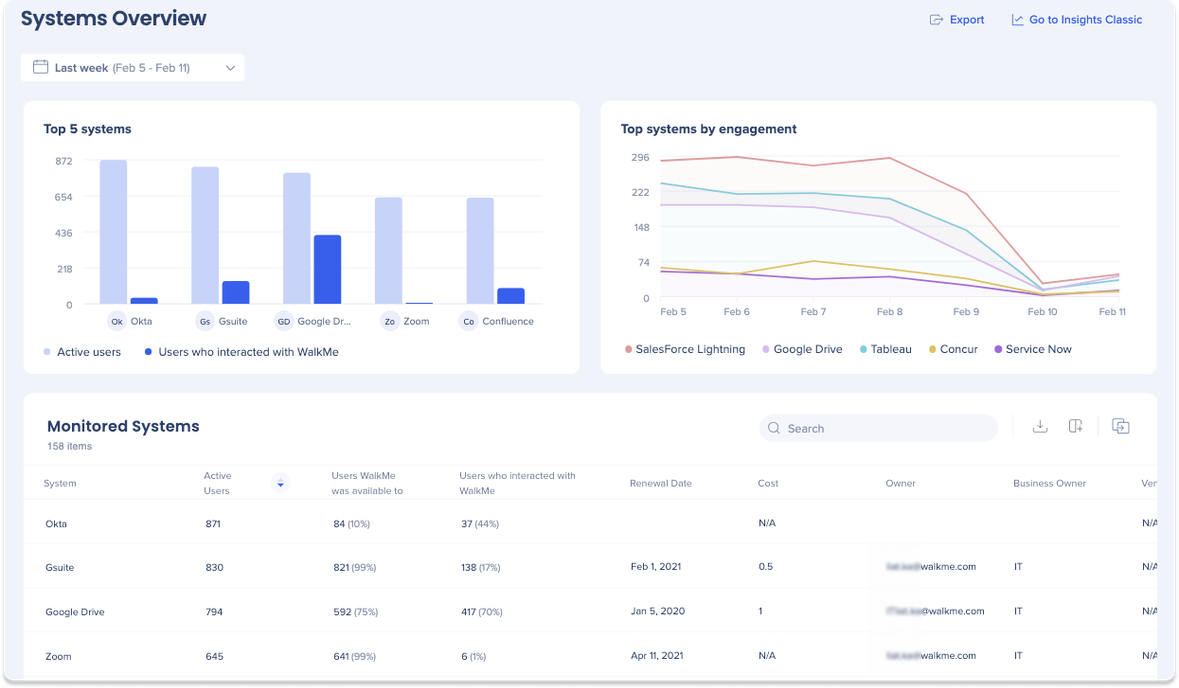
Key WalkMe Features
- In-app guidance: You can build interactive step-by-step guides, tooltips, and in-app messages such as announcements or banners to engage users and guide them from one step to the next.
- Workflow analytics: WalkMe offers features like tracked events, session streams, and user recordings. These tools help track engagement, map user paths, and identify areas of friction to enhance the user journey.
- In-app surveys: You can also collect feedback by triggering surveys like NPS by adding multiple-choice or open-ended questions.
WalkMe Pricing
WalkMe offers two price tiers, one for employees and the other for customers. Prices for both tiers are available upon request only.
Here's what each tier offers 👇🏼
WalkMe Pros and Cons
✅ Solid set of in-app onboarding tools
✅ High levels of customization and personalization
✅ Robust analytics features
❌ Often lags and crashes, especially with complex flows
❌ Steep learning curve as the tool is not entirely code-free
❌ Limited survey tools
3. Pendo
Pendo is a product analytics software that helps teams build in-app guides, launch notifications, and monitor users' interactions with the platform.
Pendo wins over Whatfix with its detailed product analytics. While Whatfix stores data for 90 days, Pendo stores for up to a maximum of seven years. Another difference lie in user data tracking. Whatfix relies on cookies for user identification but Pendo offers workflow journeys tracking and help you see drop-off points, average step completion time, and other such vital metrics.
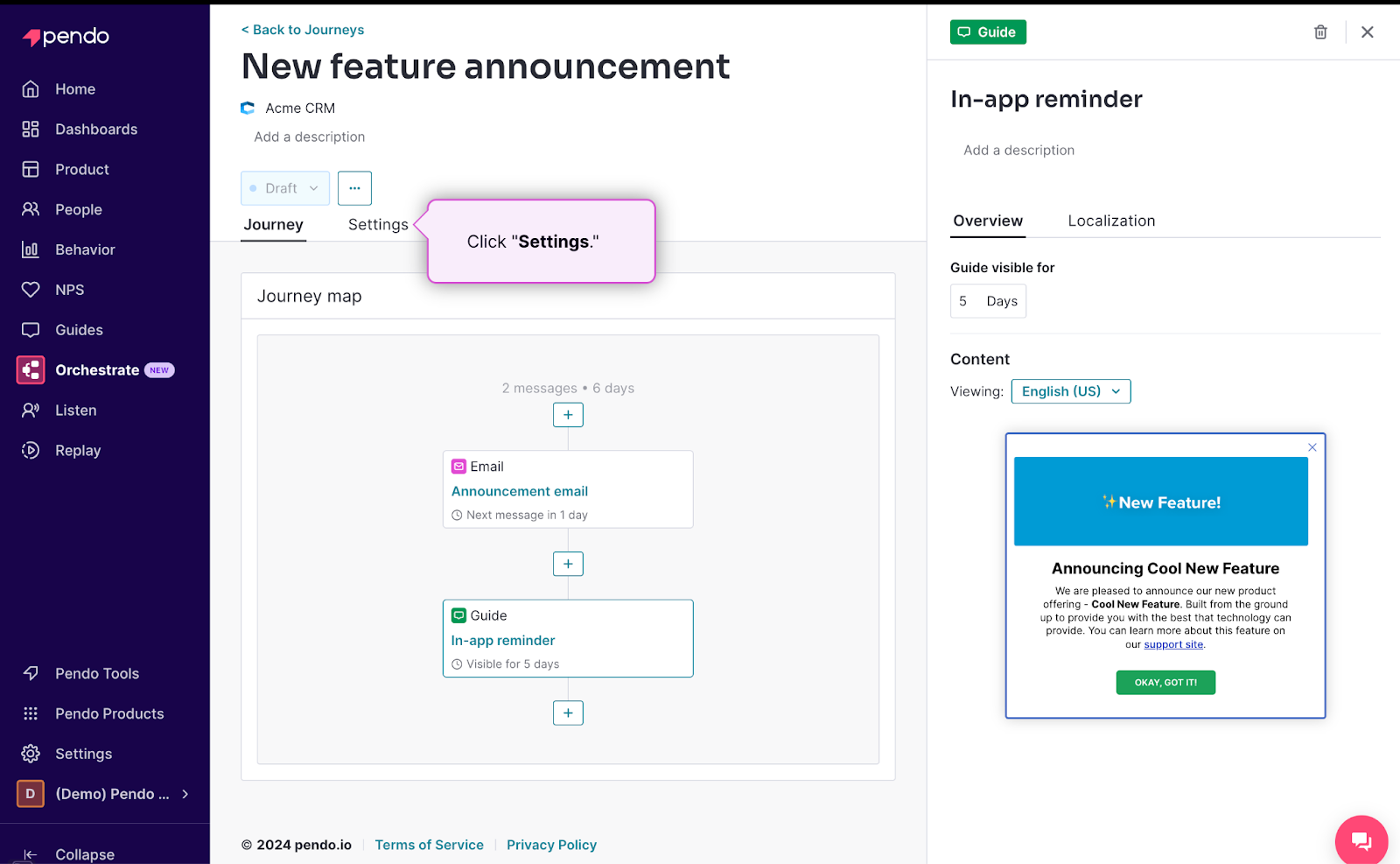
Key Pendo features
- Product analytics: Pendo provides robust analytics capabilities, allowing teams to monitor, record, and analyze user interactions with their digital content, app, and website. It offers insights into user behavior patterns, feature engagement, and product usage trends.
- In-app guidance: The platform enables the creation of interactive walkthroughs, tooltips, and onboarding flows without requiring coding skills. This feature helps improve feature adoption and streamlines the initial product onboarding process.
- Cross-channel triggers: It allows product teams to automate and coordinate messaging across multiple channels, primarily focusing on in-app guides and email. These triggers make user journeys personalized using product usage data, dynamic segments, and Pendo AI.
Pendo Pricing
Pendo offers a free plan for up to 500 monthly active users, in-app guides, and NPS surveys with Pendo branding.
All four paid plans come with custom pricing and offer the following features.
Pendo Pros and Cons
✅ Super easy to set up and connect with your existing tools
✅ Customer support team is helpful and explains things clearly
✅ Shows in-depth data about user engagement and interaction with your product
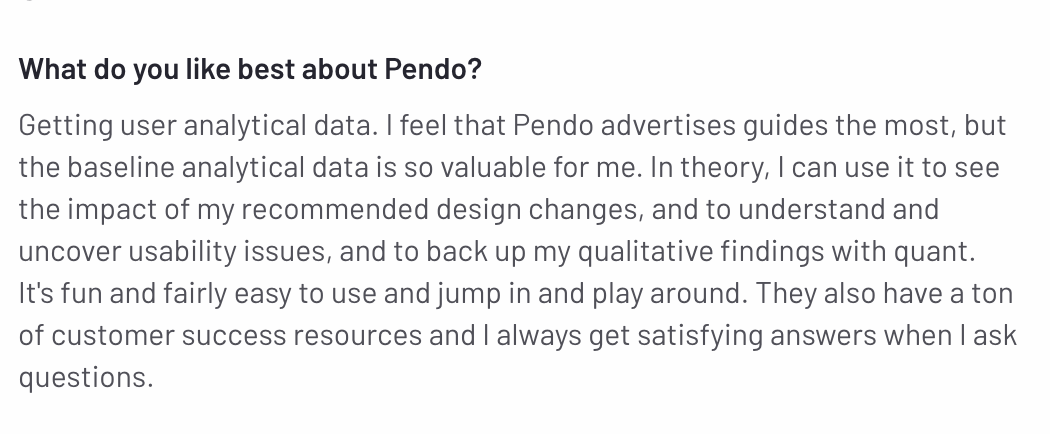
❌ You need coding skills to create advanced product tours
❌ Many useful features cost extra money on top of each plan’s price
4. Appcues
Appcues is a user onboarding platform that helps you build personalized in-app experiences through tooltips, banners, checklists, surveys, and a knowledge base.
Appcues shines over Whatfix with its advanced product analytics features.
For example, you can create user segments based on multiple attributes such as user properties, in-app flow interaction, checklists, events (ones you create or use predefined segments (Evaluators, Beginners, Regulars, Champions).
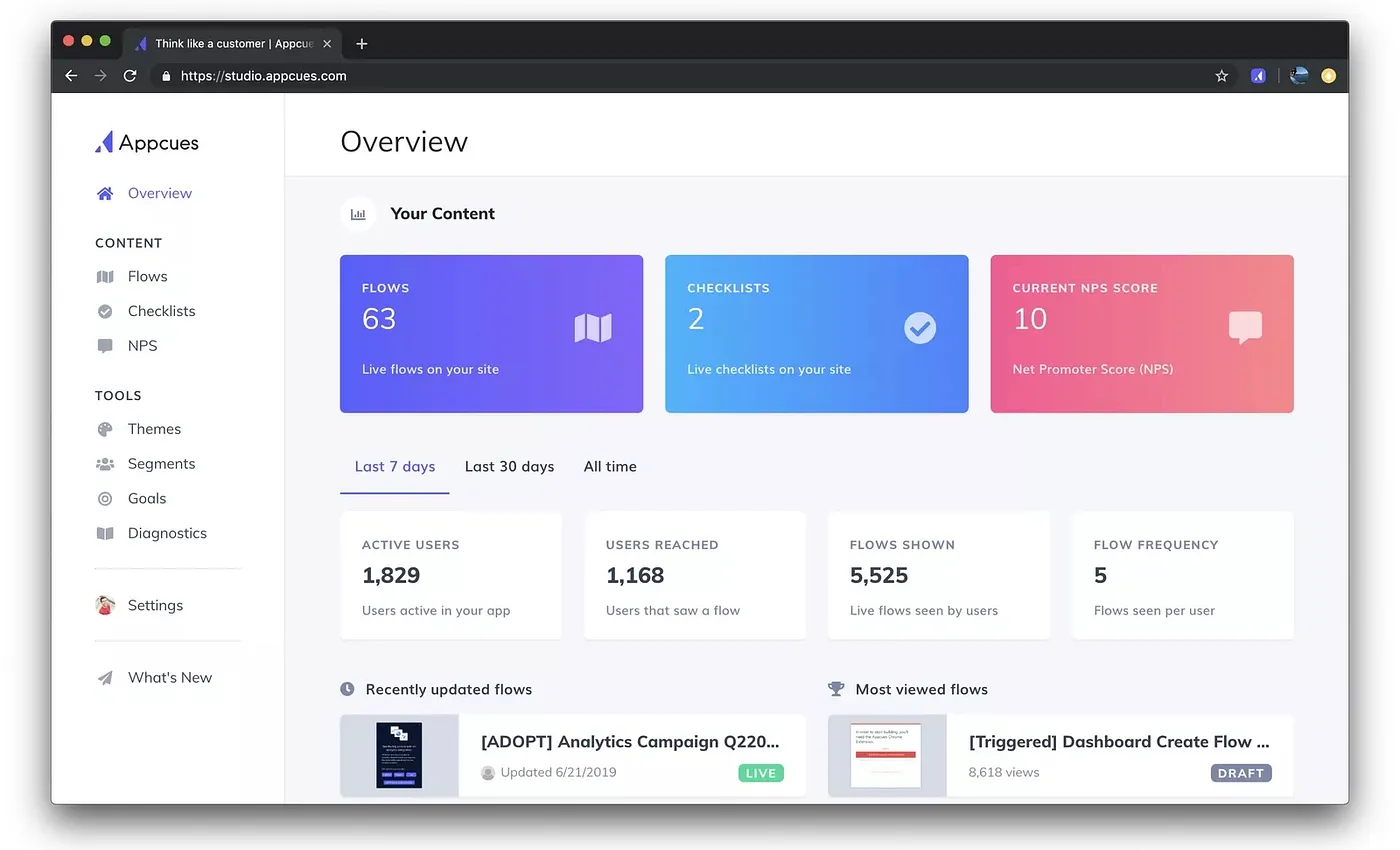
Key Appcues Features
- Automated workflows: You can create multi-step sequences by building specific user segments to show targeted and most relevant in-app experiences.
- Analytics: Appcues offers in-app event tracking like button clicks to feature usage, and helps you monitor product activation, adoption, and engagement rate for individual users and a company.
- Appcues builder: It’s a Chrome extension-based editor using which you can create in-app flows to track events, pins, and banners. The builder also lets you add personalization to each item you create.
Appcues Pricing
Appcues offers a 14-day free trial with the option to create unlimited flows and track up to 5 events. But there’s no free plan available.
The pricing is based on the number of monthly active users and comes in three tiers.
Appcues Pros and Cons
✅ Clean, intuitive interface makes navigation simple for new users
✅ No-code flow builder that is packed with customization options

❌ Limited administrative controls make user permission management difficult
❌ Steep learning curve due to insufficient documentation and proper guidance
❌ Pricing becomes expensive for growing companies due to the number of active MAUs billing model
5. Userpilot
Userpilot is a product growth platform that offers insights into how users interact with your product. It helps create an interactive customer onboarding experience by building interactive guides, UI elements, and feature tags through a Chrome Extension.
While Whatfix is a digital adoption platform, Userpilot focuses on the entire user journey by offering multiple in-app guidances such as modals, banners, tooltips, hotspots, and other patterns. Another difference between both tools is that Userpilot's surveys are more flexible and come with 14 templates to choose from.
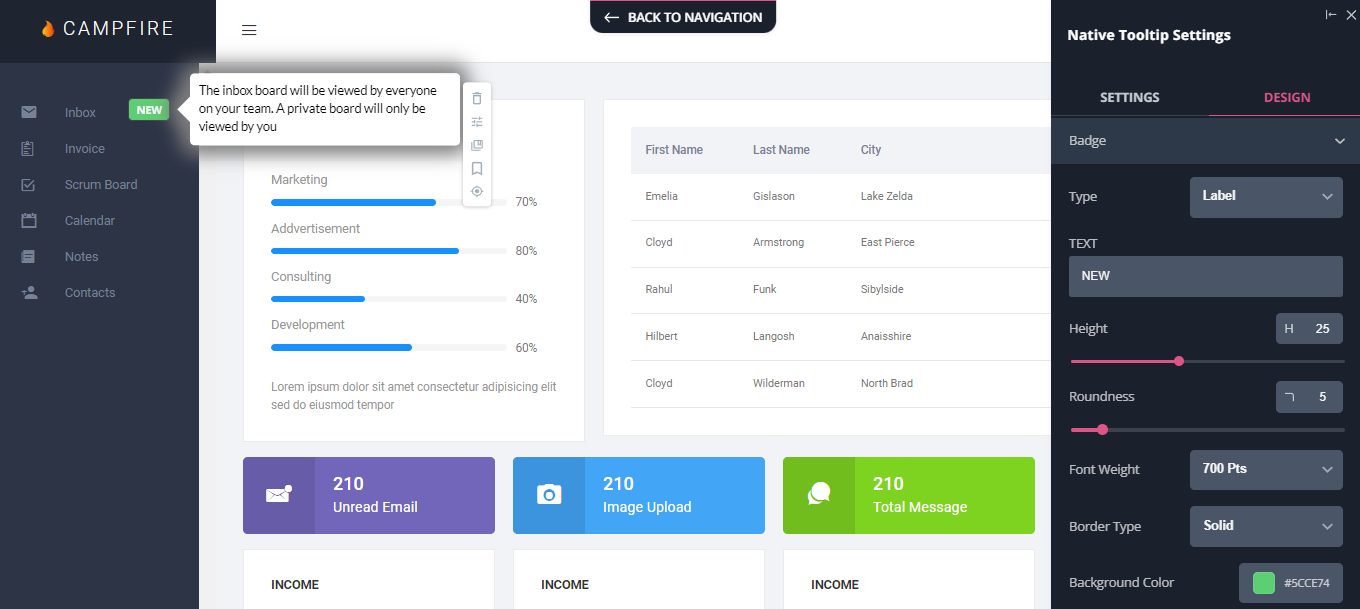
Key Userpilot Features
- No-code builder: Userpilot offers a Chrome Extension-based editor that helps you edit the in-app guides. You can use the templates to create hotspots, tooltips, checklists, or build your own.
- Funnel analytics: You can create a funnel report reflecting the customer’s onboarding journey. You can monitor a user's engagement and conversion rate by using filters like name, ID, signup date, etc..
- A/B testing: Userpilot offers native A/B testing tools to create variants of different UI elements and run split tests to find the most engaging one.
Userpilot Pricing
While Userpilot doesn't have a free tier, they offer a 14-day trial period to test their features. And, the pricing plans are divided into three tiers: Starter, Growth, and Enterprise.
Here’s a breakdown of Userpilot's paid plans 👇🏼
Userpilot Pros and Cons
✅ Shows detailed user engagement insights for different UI elements
✅ Ease of guide creation with drag-and-drop builder
✅ Offers tons of integration at entry-level plan

❌ Limited data analytics capabilities
❌ Complex and buggy interface
❌ Expensive entry-level plans with basic features
6. UserGuiding
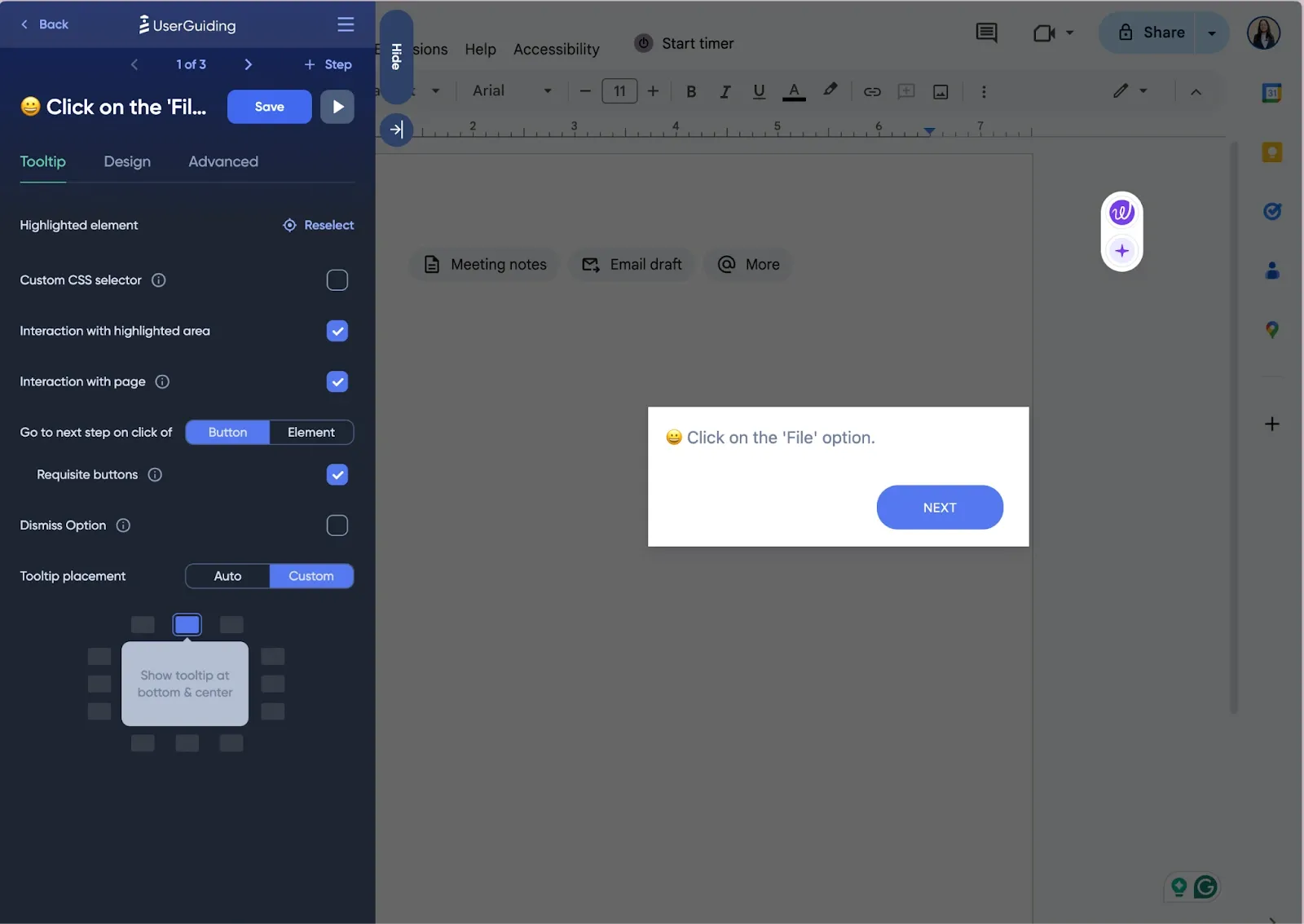
UserGuiding functions as a code-free digital adoption solution that enables SaaS organizations to develop engaging onboarding experiences, product demonstrations, and in-application guidance without developer involvement.
For businesses seeking to streamline user orientation, staff training, or increase feature utilization, UserGuiding provides an intuitive platform complemented by comprehensive analytics and user segmentation capabilities. It represents a cost-effective, self-managed alternative to WalkMe for organizations prioritizing budget efficiency.
What are UserGuiding's key features?
- Adaptable Onboarding Progression Trackers: Establish organized task listings that monitor user advancement and motivate completion of introduction phases.
- Contextual Help Elements: Implement situational information bubbles offering immediate clarification for sophisticated functionalities.
- Attention-Drawing Feature Indicators: Employ subtle animated signals to capture user focus and guide them toward new capabilities, key actions, or supplementary information resources.
- Sophisticated User Classification: Deliver tailored orientation experiences by categorizing users according to position, interaction patterns, or distinct characteristics, ensuring appropriate content delivery to specific users when needed.
What is UserGuiding's pricing?
What are UserGuiding's pros & cons?
✅ Supports multi-language guidance and customization options.
✅ Strong customer support team that is responsive.
✅ Easy-to-use guide creation with a no-code setup.
❌ Occasional performance lags and slow loading times.
❌ Limited customization options compared to advanced competitors.
❌ Limited flexibility in repositioning the Resource Center button.
What is Whatfix?
Whatfix is an all-in-one solution that offers three core products—Digital Adoption Platform (DAP), Product Analytics, and Mirror—designed to help enterprise organizations onboard, train, and support their employees and customers. Here's what each solution offers:
- Digital adoption platform: Build engaging in-app experiences through interactive guides, surveys, and contextual messaging on web, desktop, and mobile devices.
- Product analytics: Understand user journey by setting up no-code events to in-app. You can also understand their journey through the funnel analysis, build cohorts to segment users, and trigger in-app surveys to collect feedback.
- Mirror: Create a sandbox environment for your web application to offer hands-on training to users and employers without messing with the actual tool.
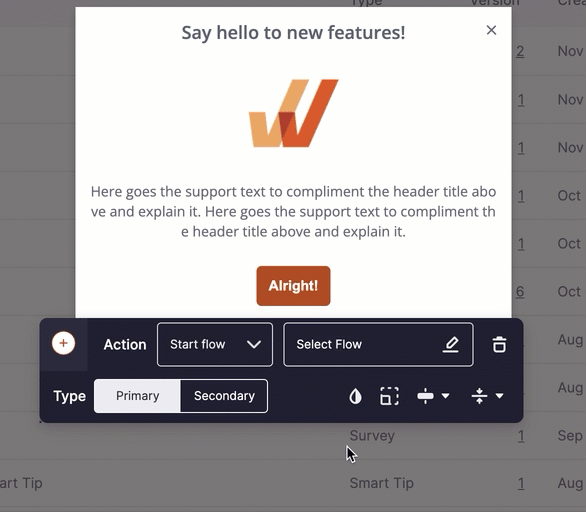
Whatfix pricing
When it comes to pricing, Whatfix charges a flat fee per product (DAP, product analytics, or Mirror), plan (described below), and user license fees. User license fees are determined by the type of user using the application:
- Employee-facing applications: A user license equals the total number of employees accessing the app.
- Customer-facing applications: A user license is based on the monthly active users (MAUs) accessing the app.
The DAP platform pricing is divided into three plans and varies depending on the device you want to track–Web & desktop or mobile. To get exact pricing, unfortunately you need to contact their sales team for a quote.
Why do customers look for Whatfix alternatives?
Now that you have an idea of how Whatfix works, let's dive into common reasons why users search for alternatives and competitors to Whatfix.
From long deployment cycles to non-transparent costs, there are three key reasons why most users look for alternatives – broken down below:
Reason 1: Complex and time-consuming implementation
Whatfix positions itself as an all-in-one digital adoption solution. While this might sound appealing at face value, it can backfire if you seek a purpose-built onboarding or training tool.
The range of features often increase the tool's implementation time—users report configuring Whatfix takes much longer than creating the content.

By trying to cover every possible use case, Whatfix ends up being a “jack of all trades, master of none.” For example, users describe its product analytics as basic, lacking the depth to provide meaningful insights into user behavior and product adoption.
If granular analytics is a priority for your team, you may find Whatfix’s offerings insufficient for your use case.
Reason 2: Limited use cases within onboarding and training
While the platform can help you build engaging onboarding experiences for new users, it fails to maintain engagement and drive continued adoption. For businesses looking to boost user retention throughout the customer's lifetime value, this limitation can become apparent quickly.
For example, there are limited options to group and share multiple guides/flows together in a collection, and it can be clunky to share indiviual guides as trackable sharing links online.
Similarly, Whatfix only displays the first 20 tasks in the Task List widget to end users, potentially restricting the amount of guidance available.
Hence, many users look for alternatives that support onboarding and optimize user experience at every stage—ensuring continuous engagement, feature adoption, and long-term value.
Reason 3: Confusing and non-transparent pricing
Pricing is another common pain point among Whatfix users. The platform’s pricing structure is complex and can quickly become expensive. For example, Whatfix charges a combination of platform and per-license fees, and each suite of tools is priced separately.
Subsequently, this makes the platform difficult to forecast and budget – especially as you grow.
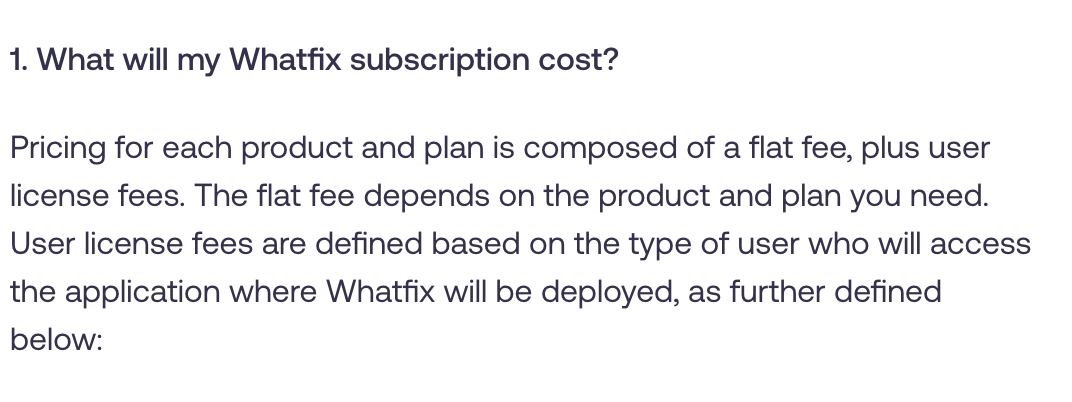
Additionally, pricing varies depending on the device (desktop & web or mobile), meaning implementing Whatfix across different platforms can significantly increase your overall costs.
This fragmented pricing model can lead to confusion and budgeting challenges, especially for teams looking to scale user onboarding across devices.
Choose the Right Whatfix Alternatives
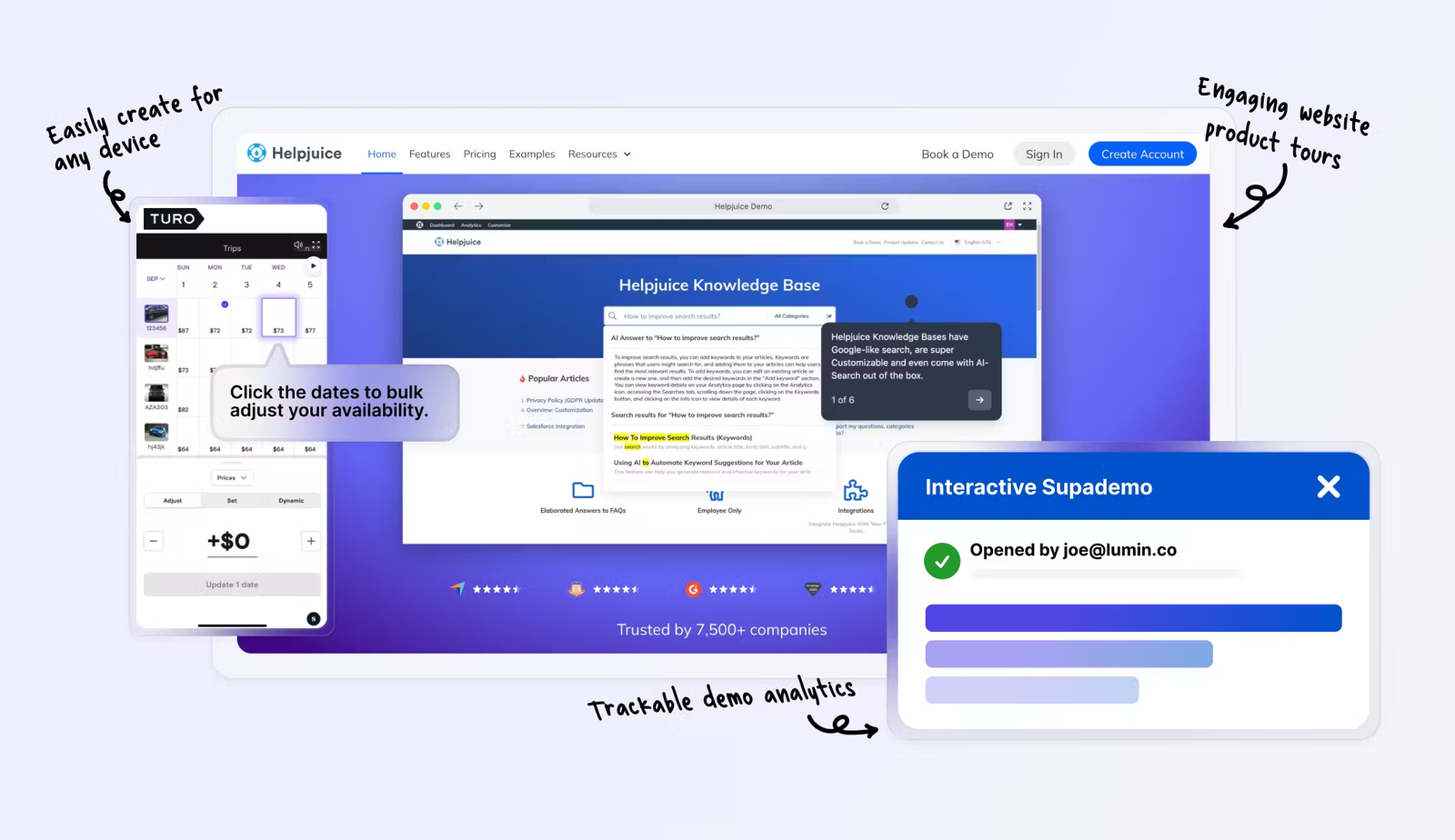
While Whatfix is suitable for customer onboarding and employee training, it's not the best option if your use cases go beyond that.
Each Whatfix alternative we discussed offers something above and beyond Whatfix's drawbacks. For example, Appcues offers advanced product analytics capabilities, while WalkMe offers similar features but at a more affordable price.
But, these alternatives come with a steep learning curve. To manage and offer an exceptional experience to your users, you need a tool with quick implementation, affordable pricing, and features.
Supademo is the ideal solution, offering a mix of all these features. That’s why 50,000+ users are already using it to build and manage their product tours, drive engagement and boost customer retention.
Ready to give it a whirl? Try Supademo’s free plan or sign up for its 14-day free trial.













.webp)








